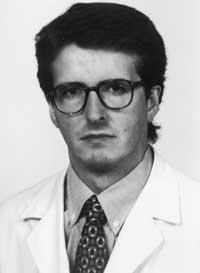After the operation at home
The concept that indicates the title is called “surgery without admission”. Within the surgery without admission, two types can be distinguished: an outpatient surgery (in which the patient comes immediately after surgery) and another one-day surgery, in which case the patient remains several hours after surgery. This second is the one that is most done. The legend of surgery without admission began in the 1960s in North America, in the United States.
In California and Washington, a no-income surgery program was launched to overcome the scarcity of beds. Because of the private health system in the U.S., they soon saw that many beds could save a lot of money and inhospitable surgery of the 1970s and especially of the 1980s had a large expansion in North America. In 1980, 20% of the interventions entered here in the US. They were operated without income, reaching almost 30% in 1990 and expect to reach 50-60% by the year 2000.

If, at first, the promoters of this new type of surgery were economic, compared with those who suffered the same operation and were admitted, it was observed that the unadmitted recovered faster, had fewer infections and that the patients suffered less psychological trauma.
In Europe, despite knowing the results of the United States, the new form of surgery has been slowly being placed, being one of the causes the existence of public health systems. Costs have not been measured as much as in the US, but in the coming years the cost of health will be an important factor. The saying celebés says that “health has no price, but it has cost.”
Surgery without admission is a revolution with respect to classical practice. Not in regard to the intra-operative technique (this is the same), but to the subsequent care and management. We will serve the patient we have operated and sent home, visiting the nurse or doctor at home, or by phone ... putting the most appropriate means in each place. With this system the weight of care passes from the hospital to the care in the street.
In surgery without admission the patient participates more actively in his recovery (less “patient”). The lack of hospitalization significantly reduces infections. The psychic trauma that generates the intervention, when going home after the operation, is less, the beds are free, so the costs of the operations in many cases are reduced to half. Better quality.
In the Autonomous Community, in the last 2-3 years, one-day surgical programs have been launched in most public hospitals. It is estimated that in the near future 18% of the surgery that is performed admitted will be performed by one-day surgery. Osakidetza has conducted an opinion poll on people who have been intervened in the one-day surgery program. It has been asked 1891 patients and the results have shown that the opinion on the care offered to them is 92.3% “good or very good”, compared to 96.6% satisfied or very satisfied.
Taking into account the long waiting lists we have in our health system, this activity will have hopeful results, but for the program to develop with all its strength, health institutions have to educate society if they operate without income, saying it is not for a mere economic reason. We must teach that it is for giving better quality.
Buletina
Bidali zure helbide elektronikoa eta jaso asteroko buletina zure sarrera-ontzian











